skip to main |
skip to sidebar
 I haven’t been in the business long. I’ve only worked at a few agencies and seen a few different styles. So when I talk about the industry as a whole, I’m sure there are exceptions. However, from my observations I feel there is a tendency that hinders the ability for creatives to come up with innovative traditional and “nontraditional” advertising. Too often the creative brief will state the required medium in the first paragraph. I have learned and agree with something they do here at Crispin Porter + Bogusky. I call it surface level thinking. Long before you start thinking of a medium, you begin by thinking of the most basic, creative way to express the value of the product. For example, the target of the Volkswagen GTI has a nagging urge to drive fast. What if we represent this urge with a character that says out loud what these drivers are thinking in their heads? You come up with a ton of these small thoughts and present them to your Creative Director. After you have a few good thoughts then you continue to push them out until they eventually fall into the best medium fit for the message. The key is to stay on the surface and let the best ideas find their way to a root (medium). CB+B calls this thinking of creative content. I heard about this process first at a Utah Ad Fed luncheon where Jamie Webb spoke about it. Jamie did a great job explaining it, but now I realize how possible it is that no one really understood him enough to know how to do it. I hope this post helps.
I haven’t been in the business long. I’ve only worked at a few agencies and seen a few different styles. So when I talk about the industry as a whole, I’m sure there are exceptions. However, from my observations I feel there is a tendency that hinders the ability for creatives to come up with innovative traditional and “nontraditional” advertising. Too often the creative brief will state the required medium in the first paragraph. I have learned and agree with something they do here at Crispin Porter + Bogusky. I call it surface level thinking. Long before you start thinking of a medium, you begin by thinking of the most basic, creative way to express the value of the product. For example, the target of the Volkswagen GTI has a nagging urge to drive fast. What if we represent this urge with a character that says out loud what these drivers are thinking in their heads? You come up with a ton of these small thoughts and present them to your Creative Director. After you have a few good thoughts then you continue to push them out until they eventually fall into the best medium fit for the message. The key is to stay on the surface and let the best ideas find their way to a root (medium). CB+B calls this thinking of creative content. I heard about this process first at a Utah Ad Fed luncheon where Jamie Webb spoke about it. Jamie did a great job explaining it, but now I realize how possible it is that no one really understood him enough to know how to do it. I hope this post helps.
• Why the sumos? www.sublymonal.com
No, I don't mean to be offensive; I'm referring to how we all are learning how to use technology to convey advertising messages. I'm also referencing three projects that we can use to learn from; similar to how we use "(blank) for dummies" books. I'll start with the most impressive example first. www.gypsycabproject.com uses live video feed from a VW Rabbit taxi cab. The cab driver has never been to NY and you as the viewer get to experience it all with him. This is an genius CP+B project that mixes new technology in a unobtrusive manner, and it's something more than just a website. The second example is a videocast and minisite by Nike and Google. For those less familiar with videocasts, they are free downloadable video clips created and posted by anyone. This project is called Joga Bonito (Play Beautiful), and promotes the play of futbol, football, or soccer, with finesse. The amazing part is that it combines the great videocast with a minisite that allows you to join the Joga community. Joining gets you in contact with other soccer fanatics and gives you a personal Joga blog, which you can use to keep in contact with these fans. Visit iTunes to find the videocasts and www.joga.com to see the minisite. The last example is another VW/CP+B project. If you go to www.vwfeatures.com you can customize a Jetta and crash it into various things. It is a fun way to use CGI in a educational manner and keep the severity of car accidents in a humorous tone. After my last post I received a comment that I sounded a little lofty. Well, I agree. I did get a little high on a soapbox. However, I believe there is a drastic change that needs to occur in several dinosaur agencies. It doesn't make them wrong or stupid; the bigger the ship the longer it takes to change course. I felt that these few examples may be a good example of how admirable companies like VW and Nike are willing accepting these technological advances. Let's not fall behind. Let's lead the way as advertisers and embrace these great new media. 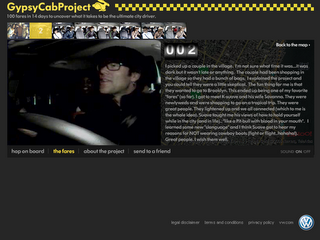

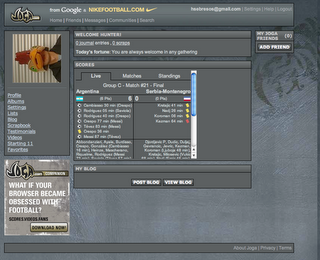


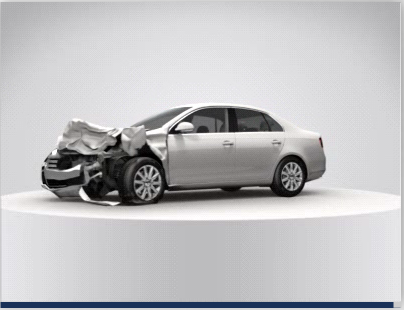
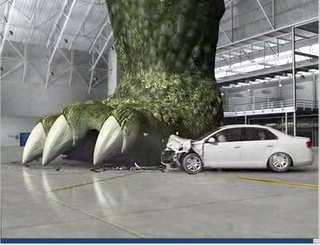
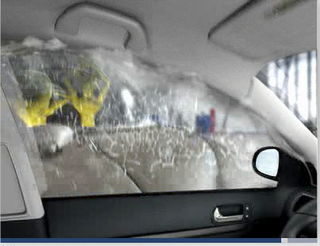

 I've come to believe that the key ingredient to the success of an advertising agency is confidence. At least that is why CP+B is doing so well. On their home page, www.cpbgroup.com, they refer to themselves as a factory, and that is exactly what they are. Every aspect of the agency is set up to create exceptional work. The process they use holds no prejudice to name or status. As you go through your day meeting people you'll find out that everyone is a believer. Everyone from the account side to the creative directors; from the media people to the interns—they all believe that nothing but the best creative work will come forth because of their contributions. The changes in the industry and emergence of new media are nothing of a scare here. In fact they are usually using the media before it becomes highly popularized. It's because the people here use this new media in their lives and are not scared to use it to talk to others like them. They are confident that the "Idea [truly] is Boss". I know many agencies claim this same motto but they probably don't realize that they aren't truly following it. They have fear. Fear of changing the structure of the creative department; fear of losing clients, or fear they may offend that old proud creative director. Joseph Jaffe, author of, Life After the 30–Second Spot, and voice of the Across the Sound podcast said, "Resistance to change is directly proportionate to what the old regime has to lose." I very much agree. After all it's easy to believe, "if it worked once why shouldn't it work again?" Wrong. Doing more of the same thing will only get you more of the same results, and if the results are not what you want, you need to change. I don't blame the agencies that want to change but don't know how. Well, I know I'm no authority, but begin with this thought. What should you fear most, taking a risk to keep up with new changes, or falling away completely?
I've come to believe that the key ingredient to the success of an advertising agency is confidence. At least that is why CP+B is doing so well. On their home page, www.cpbgroup.com, they refer to themselves as a factory, and that is exactly what they are. Every aspect of the agency is set up to create exceptional work. The process they use holds no prejudice to name or status. As you go through your day meeting people you'll find out that everyone is a believer. Everyone from the account side to the creative directors; from the media people to the interns—they all believe that nothing but the best creative work will come forth because of their contributions. The changes in the industry and emergence of new media are nothing of a scare here. In fact they are usually using the media before it becomes highly popularized. It's because the people here use this new media in their lives and are not scared to use it to talk to others like them. They are confident that the "Idea [truly] is Boss". I know many agencies claim this same motto but they probably don't realize that they aren't truly following it. They have fear. Fear of changing the structure of the creative department; fear of losing clients, or fear they may offend that old proud creative director. Joseph Jaffe, author of, Life After the 30–Second Spot, and voice of the Across the Sound podcast said, "Resistance to change is directly proportionate to what the old regime has to lose." I very much agree. After all it's easy to believe, "if it worked once why shouldn't it work again?" Wrong. Doing more of the same thing will only get you more of the same results, and if the results are not what you want, you need to change. I don't blame the agencies that want to change but don't know how. Well, I know I'm no authority, but begin with this thought. What should you fear most, taking a risk to keep up with new changes, or falling away completely?
 I haven’t been in the business long. I’ve only worked at a few agencies and seen a few different styles. So when I talk about the industry as a whole, I’m sure there are exceptions. However, from my observations I feel there is a tendency that hinders the ability for creatives to come up with innovative traditional and “nontraditional” advertising. Too often the creative brief will state the required medium in the first paragraph. I have learned and agree with something they do here at Crispin Porter + Bogusky. I call it surface level thinking. Long before you start thinking of a medium, you begin by thinking of the most basic, creative way to express the value of the product. For example, the target of the Volkswagen GTI has a nagging urge to drive fast. What if we represent this urge with a character that says out loud what these drivers are thinking in their heads? You come up with a ton of these small thoughts and present them to your Creative Director. After you have a few good thoughts then you continue to push them out until they eventually fall into the best medium fit for the message. The key is to stay on the surface and let the best ideas find their way to a root (medium). CB+B calls this thinking of creative content. I heard about this process first at a Utah Ad Fed luncheon where Jamie Webb spoke about it. Jamie did a great job explaining it, but now I realize how possible it is that no one really understood him enough to know how to do it. I hope this post helps.
I haven’t been in the business long. I’ve only worked at a few agencies and seen a few different styles. So when I talk about the industry as a whole, I’m sure there are exceptions. However, from my observations I feel there is a tendency that hinders the ability for creatives to come up with innovative traditional and “nontraditional” advertising. Too often the creative brief will state the required medium in the first paragraph. I have learned and agree with something they do here at Crispin Porter + Bogusky. I call it surface level thinking. Long before you start thinking of a medium, you begin by thinking of the most basic, creative way to express the value of the product. For example, the target of the Volkswagen GTI has a nagging urge to drive fast. What if we represent this urge with a character that says out loud what these drivers are thinking in their heads? You come up with a ton of these small thoughts and present them to your Creative Director. After you have a few good thoughts then you continue to push them out until they eventually fall into the best medium fit for the message. The key is to stay on the surface and let the best ideas find their way to a root (medium). CB+B calls this thinking of creative content. I heard about this process first at a Utah Ad Fed luncheon where Jamie Webb spoke about it. Jamie did a great job explaining it, but now I realize how possible it is that no one really understood him enough to know how to do it. I hope this post helps.








